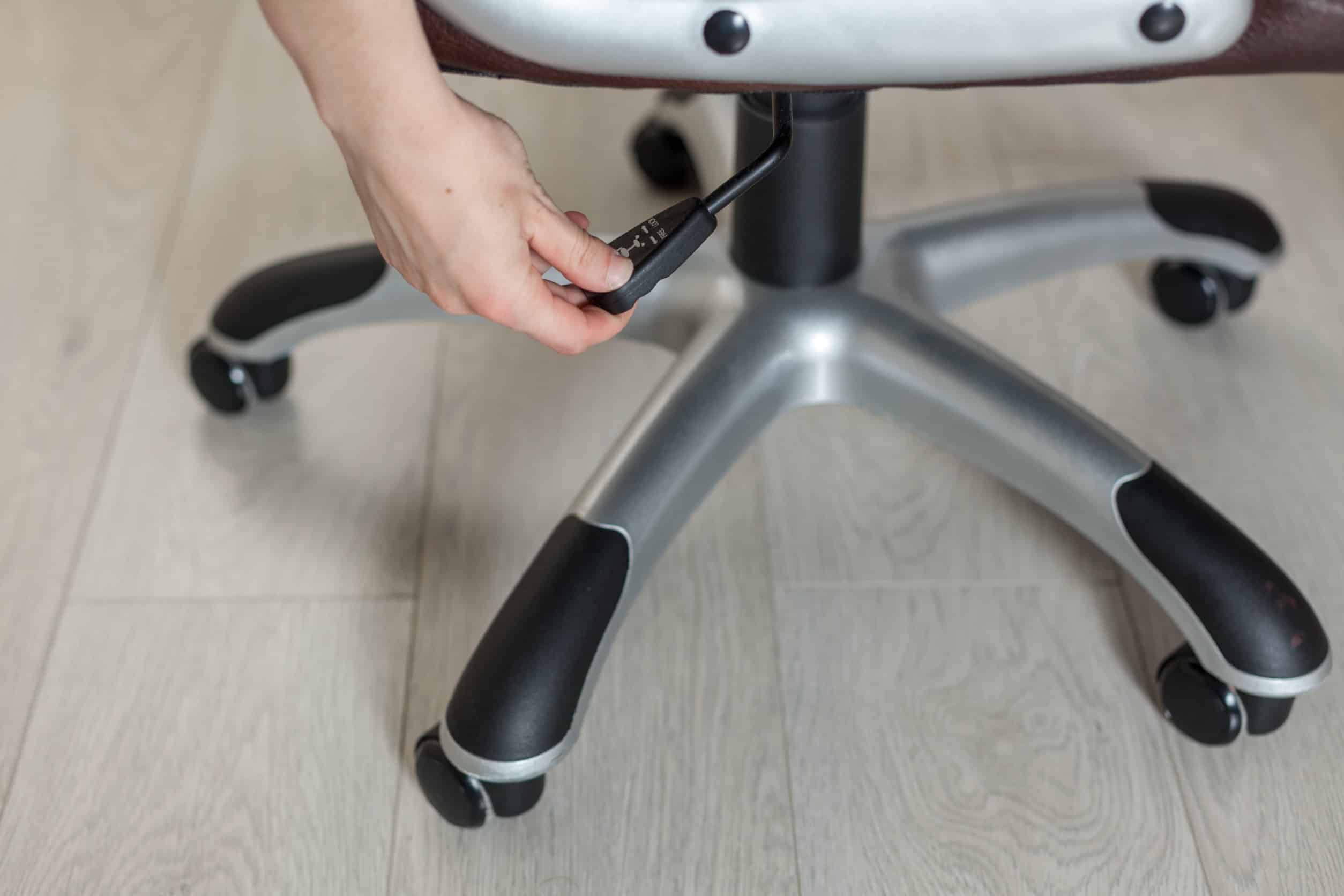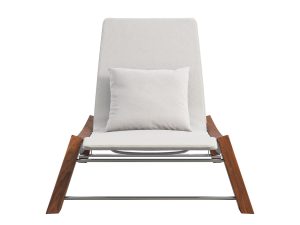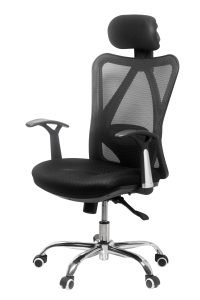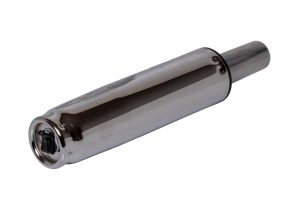When we’re working, sitting is our natural state. Most of the time, we don’t even realize how long we’ve been sitting, and sometimes it can be hours before we stand up to take a breather. Considering this, it’s only natural for our bodies to be affected sooner or later.
Prolonged sitting in less than ideal positions can lead to a variety of chronic problems, including back pain, hip tightness, and spine-related disorders. Some studies suggest that it can even affect knees and shoulders, but it all depends on how you sit, of course.
The height of your chair can have a significant impact on your posture, and your overall health and mood. This is why in today’s post, we’ll talk about how to make chairs taller, as well as explain why the height of your chair matters and what other features affect the ergonomics of a chair.

Why the Height of Your Chair Matters
When you’re sitting for long periods of time, keeping your body in a neutral position becomes especially important. A neutral position means that your spine is resting in its natural shape, and it requires you to sit upright.
However, sitting upright doesn’t come naturally to most people. Even if you try to be conscious about it and make an effort to keep your chest up and shoulders back, the second it slips out of your mind, it’s over. Your body immediately goes back to the slouching position with rounded shoulders, and it stays like that until the next time you realize what you’re doing once again.
To break this endless loop that’s familiar to many, your body needs extra support. This is why it’s important to set your chair at an ideal level that’s appropriate for your body height. If your chair is too high and your feet are dangling when you sit, your hips and knees will be left without support. However, this doesn’t mean that if you’re sitting with your feet on the ground, you’re golden.
Sitting in a chair that’s too low for your height may cause you to involuntarily tuck one of your legs under you, or to sit cross-legged. Although these positions are just fine when you’re sitting casually, it’s not ideal to sit in these positions for long periods of time. Sitting cross-legged or with one leg tucked under creates an imbalance in your spine, which may cause chronic pain and posture problems.
How to Find Your Ideal Chair Height
As we said, setting your chair to your ideal height can save you tons of pain and stress in the long run. To find out what your ideal chair height is, you can simply follow these steps:
- Sit in an upright position without extending your upper body too much while keeping your hips relaxed,
- Bend your knees at a 90-degree angle,
- Keep your feet parallel to the ground,
- Adjust the height until your feet firmly touch the ground.
Now that we explained why it’s important to set your chair height to the right level and how to find your ideal height, let’s see how you can increase your chair height.
How to Make Chairs Taller
Making your chair taller can be as simple as pulling a lever, but it can also become a challenge if you have an older model chair, or if the lever or gas lift is broken. Besides, there are many types of office chairs available out there. Luckily, our tips below cover a wide range of scenarios that will help you raise your chair in no time.
Use The Lever
This may sound obvious, and it is, but the easiest way you can raise a chair is by using the lever that’s usually located right under the seat. Pulling the lever while there’s no weight on the chair should raise the seat, and pulling it while you’re sitting on it will make it lower.
Nowadays, most office chairs feature gas lift mechanisms that help lift or lower the chair, and these are called pneumatic office chairs. Other chair models might have similar mechanisms that use liquids instead of air to lift the chair, and these are called hydraulic lift chairs. Both mechanisms are pretty reliable, and that’s why they are the most popular chair lift mechanisms out there.
If you can’t find a lever under the seat, however, there’s a slight chance that your chair is an older model that features a different kind of mechanism. Let’s explain.
Maybe It’s a Screw-Lift Chair
If your chair doesn’t have a lever underneath the seat, it may be a screw-lift chair. These chairs are very old, and they feature a different mechanism than the one we’re accustomed to.
Screw-lift chairs, also known as non-pneumatic chairs, can be raised and lowered by simply turning the seat around or turning a knob that’s located under the seat. To know in which direction to turn the chair or the knob, you can try looking under the seat. There should be arrows indicating in which direction to turn to get the desired effect.
To find out more about how to raise a chair that doesn’t have a lever, you can head over to our post where we shared our best tips.
Use Seat Cushions
If you set your chair all the way up, but it still doesn’t cut it, there are other solutions your can try. One of the easiest ways you can raise your chair is to use seat cushions, and they’re usually pretty affordable.
You can easily find one online, and most of them are ergonomically designed. This is usually achieved by having the part of the cushion that will come into contact with your tailbone raised, which helps you sit upright.
If all you need is to make your chair more comfortable without adjusting the height, you can check out our post on how to make office chairs more comfortable where we shared all of our best tips.
Change The Casters
In case you didn’t know, the casters are the little wheels that are attached to the base of your chair, and like many parts, they come in different sizes too! If you’re not satisfied with the overall height of your chair and think that the casters are getting a bit old as well, try changing them.
Usually, the standard casters that are commonly used in office chairs have a diameter of 2 inches (5 cm), but there’s nothing wrong with using larger ones. You can get 4-inch (10 cm) casters and easily install them because they are designed to fit on all chairs with casters.
If your chair doesn’t have casters, however, you may still be able to install casters to the legs of your chair if the design allows it. By drilling holes under each leg and installing the casters securely, you can raise your chair’s height effectively while making it mobile at the same time!
Use a Height-Extension Kit
If you’re not satisfied with how much your chair raises when you use the lever, you can actually use a Drafting Stool Kit w/ 6" Extension Tube as a height-extension kit for your chair. These kits usually feature an extension tube as well and they can help raise your chair as high as 8-10 inches (20-25 cm).
One downside of using an extension kit is finding the right one. These kits are usually designed to work with specific types of chairs, so finding one that fits your chair’s model may be challenging.
A height extension kit is the best option out of our recommendations if you want to significantly raise your chair. It can even turn your chair into a standing desk chair, which should go great with a standing desk. Using a standing desk and chair for work has many health benefits and it might provide you with the motivation boost you’ve been looking for.
If you’d like to switch to a standing desk and are looking for a good standing chair instead, we have reviewed the best models out there, and you can read all about it in our buying guide.
Change The Gas Lift
If none of the above-mentioned tips worked, as a last resort, you could try replacing the gas-lift cylinder. If your chair uses a hydraulic mechanism, you can also find a replacement hydraulic cylinder just as easily. Going for a cylinder that can extend longer than your current one is key here.
If you have a broken gas lift and you were satisfied with your chair’s old height, you can also get a cylinder that’s the same size as yours, and the process is the same. Here’s how to change the gas lift cylinder easily:
- If possible, raise the chair all the way up first,
- Place your chair upside down on the ground,
- Hold the cylinder with one hand, and use a hammer or a similar tool to hit the base to detach it from the cylinder itself,
- Use a wrench to turn the cylinder counter-clockwise and detach it from the seat of the chair,
- Place the new cylinder, secure it with the wrench, and put the base back on.
Conclusion
In today’s post, we shared our tips on how to raise a chair higher and explained how to achieve the correct height for your body height. Setting your office chair at the right height not only provides more comfort, but also helps with posture problems and chronic back pain.
If your chair doesn’t have a lever to raise it, it might be a screw lift that raises by turning the chair. If that doesn’t work, you can try adding a cushion to your seat for instant relief.
Solutions that require more work are replacing the casters on the legs of your chair for larger ones, or completely changing the gas-lift mechanism. In some cases, you might also benefit from using a chair extension kit, which should be useful if you have a standing desk.
Despite all your efforts, you still might be dissatisfied with your office chair. If that’s the case, it may be time for a replacement! To find out what your options are and what are the best ones out there, you can read our buying guide on the most comfortable office chairs.





